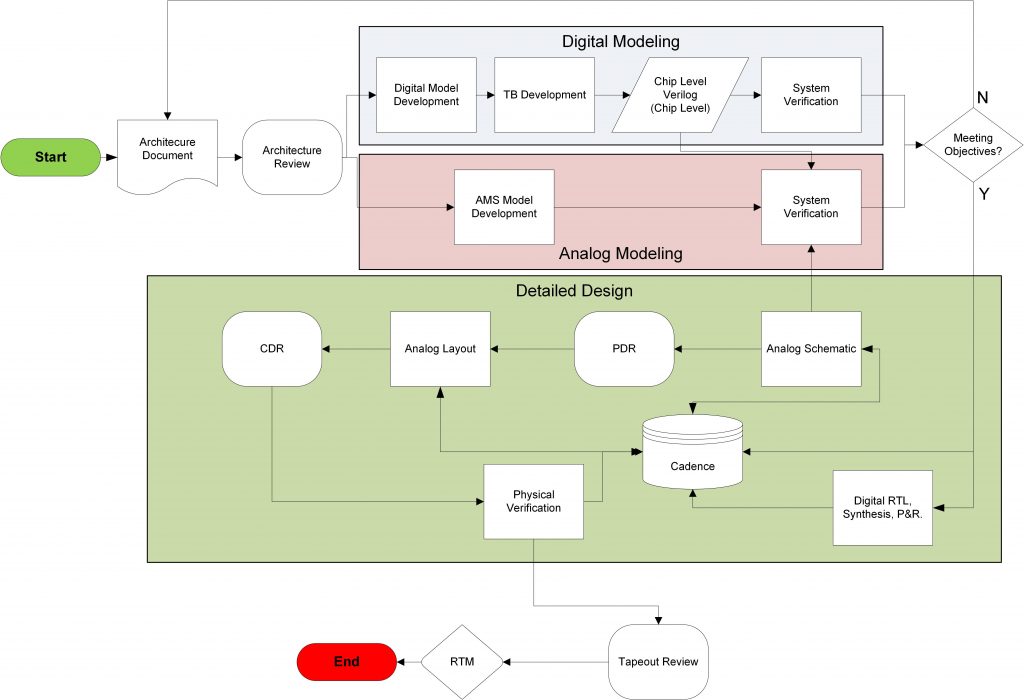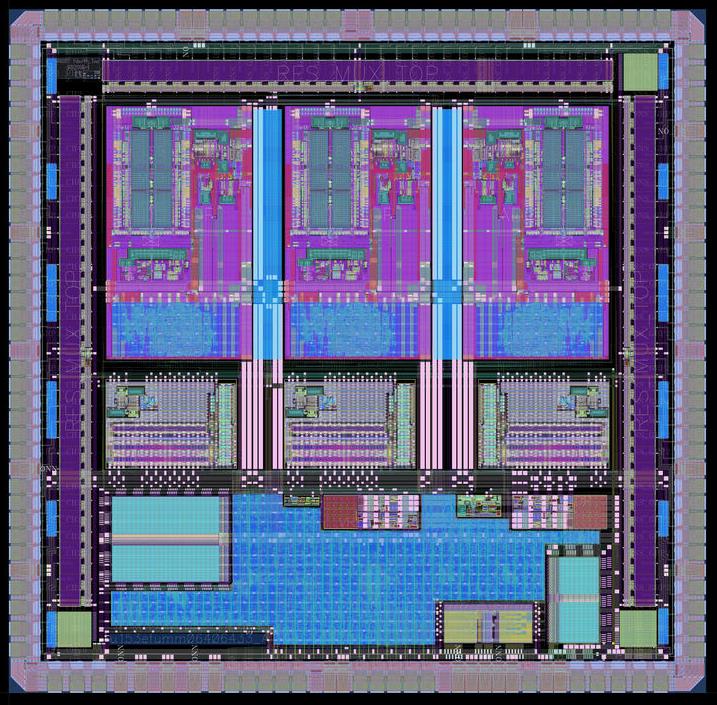Design Execution
Design Enablement
The choice for the design flow was selected to enable a comprehensive verification strategy being in place to ensure first time success. This validation included block level spice simulations, digital verification and AMS verification.
As in the 1st case study, a methodology document for the project was defined to provide clear guidance to the team as to how the design activities would proceed. As stated earlier, this document guides the team to provide consistent deliverables that could easily be integrated into the chip.
Reviews
There were four major levels of review that occurred during this development. These checkpoints included the customers’ team to allow a collaborative decision process to provide for course corrections that needed to be made for the program. At each review the compliance matrix was reviewed and updated to demonstrate how the design performance compared to specification requirements.
- The first review was the architectural review. This phase essentially reviewed the engineering specification to ensure that the assumptions made for the device would result in a design that met the overall requirements.
- A schematic level review included block level simulation results which proved the feasibility of meeting performance targets. Design and verification methodologies were reviewed to demonstrate the device would be thoroughly checked to insure proper operation under all manufacturing and environmental conditions. Finally, a preliminary review of the device floorplan demonstrated it would meet the customers’ size and signal interface constraints.
- The third review was a layout level review and included simulations that accounted for parasitic contributions from the completed layout.
- The fourth review was for database release to manufacturing.
Actions for all reviews were identified and tracked to closure through regular collaborative meetings with our customer.
Characterization
As noted previously, this project was subject to ITAR rules which dictated that fabrication, characterization, qualification and production testing be conducted domestically. ASIC North subcontracted this work to a US based facility specializing in lower volume testing for US Military and Aerospace projects. ASIC North Engineers developed the necessary test patterns for device configuration which were then converted to test programs for the selected characterization and production test platform.
All Engineering hardware provided to our customer worked flawlessly in their system test environment. However, characterization testing was delayed due to devices being damaged by incorrect power supply initialization on the characterization tester. ASIC North Engineers traveled to the suppliers’ facility to work alongside of the suppliers’ test engineers during the debug efforts. Our engineers were able to diagnose the problem and demonstrate the failure mechanism in simulation. This resulted in a modified power supply sequencing plan on the tester. Subsequent testing proceeded without incident and a full characterization report was provided to the customer.
Qualification
For this project, Qualification of the device is being completed by the customer as part of their system qualification. No unique device qualification was required.
Manufacturing
As noted above, the manufacturing phase included working with the Fab to approve and create the masks, schedule engineering and production hardware, and work with outsourced assembly and test (OSAT) partners to handle the assembly, test, qualification and production of the product. For this program ASIC North managed the supply chain for all aspects of the manufacturing process.
ASIC North is in the process of currently delivering production units for this development.




